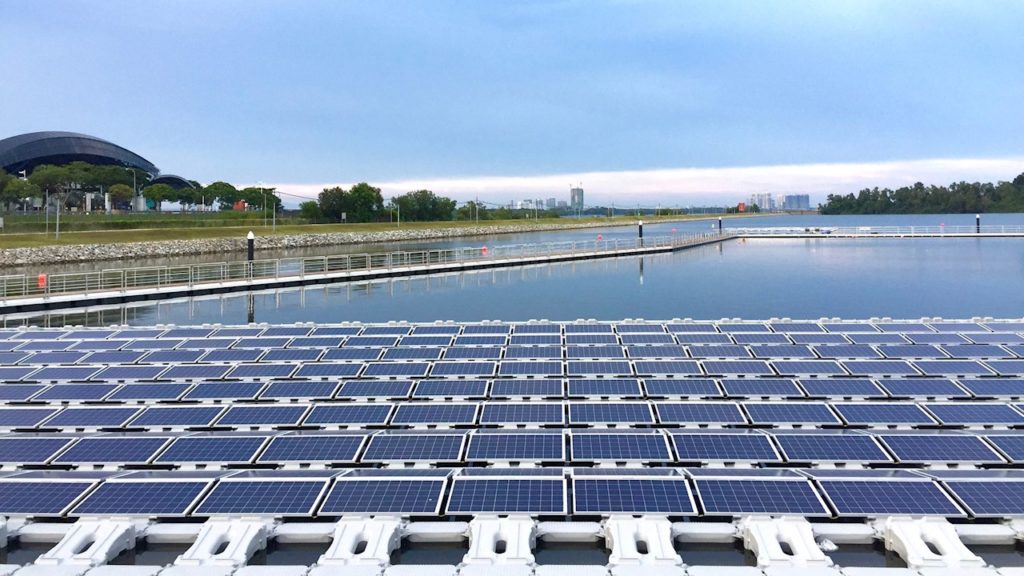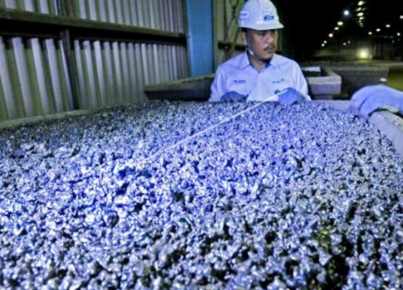Climate change hardly affects Southeast Asia. Singapore is banking on solar energy for decarbonisation but, despite efforts, the road to sustainability is still uphill
Singapore is one of the Southeast Asian countries most affected by climate change. Amidst the worrying rise in sea levels in the region's climate, the city-state on the Malaysian peninsula has taken the international commitments of the United Nations 2030 Agenda for Sustainable Development very seriously. This is the reason why, recently, various de-carbonization programmes have been implemented, including the construction of a huge solar panel, in the Strait of Johor.
The Sunseap Group - the largest solar energy supplier in Singapore - was responsible for the solar platform’s construction. The installation consists of 13,312 panels, with an area equivalent to about seven football field. It will be able to offset up to 4,000 tons of carbon dioxide per year and power 1,400 residential flats. As a local entrepreneur engaged in the sector pointed out, "after having exhausted the roofs and the available land, which is very scarce, the next great potential is our own water area." The sea is considered the new frontier for solar installations, as global warming and rising water levels pose a serious threat to the coastal populations of Southeast Asia. Sunseap Group's floating panels are designed to withstand changing weather conditions, with a system that keeps both the platform and the operational equipment onboard stable.
According to officials from the Ministry of Sustainability and the Environment, Singapore embraced sustainability many years ago: also known as the "Garden city", it is considered one of the greenest cities in the world. It has implemented virtuous policies in favor of environmental respect, also introducing taxation on carbon emissions. The Minister of Sustainability and the Environment, Grace Fu, launched the new Green Plan 2030 in February. According to the government, indeed, the green economy can be a key competitive advantage, capable of creating new employment and growth opportunities. The Enterprise Sustainability Program (ESG) was launched for companies, with the aim of accompanying them towards more sustainable business models: as an ESG official suggested, "sustainability needs not to be at odds with profitability". Edwin Chow, assistant managing director for innovation and business at ESG, added "As consumers become more aware of corporate sustainability and trade, companies are under pressure to improve business practices as sustainability needs to be embedded in processes, products and services".
However, despite projects on decarbonisation, Singapore is not out of danger yet. The small Asian city-state has been facing extreme climatic phenomena for decades. The so-called "twin challenges” are the main threat: these are coastal floods and severe storms with extreme rainfall that can cause inland flooding. Much of the Singaporean territory is located just 15 meters above the mean sea level, and 30% of the country less than 5 meters.
Meteorological phenomena are not the only climate-related challenge that the authorities are called upon to manage. The city heats up twice as fast as the global average. In fact, in Singapore, there is only one season, which residents have ironically divided into four levels of tolerance: “hot, hotter, hottest and hell”. For decades, citizens have made extensive use of air conditioning, but it is considered an energy-consuming technology. As Bloomber reports, Singapore is also emblematic of the so-called "urban heat island" effect: due to the hard surfaces of buildings and buildings that absorb heat, the temperature of a built-up urban area can be significantly higher than that of surrounding land. The Asian Garden City is unable to compensate for the production of anthropogenic heat with the benefits of greenery, which it has also invested in for a long time.
Singapore faces a tricky dilemma: it needs to make the city’s conditions more liveable for its 6 million inhabitants, without dangerously increasing its carbon emissions. The construction of the huge solar panel platform in the northern strait of the island seems to be going in the right direction, but there is still a long way to go. The city-state is one of Asia's largest per capita carbon dioxide emitters. Local environmental movements accuse the government of not doing enough to address the challenges of anthropogenic climate change since, despite the expansion of the renewables sector, natural gas remains the main source of energy (according to some environmental protection organizations it would still produce 96% of the energy used). According to Climate Action Tracker, even if the country remained faithful to the objectives announced in 2020 to contribute to the reduction of emissions established by the Paris Agreement, these commitments would still be insufficient. Singapore has indeed embarked on the path to sustainability, but the urgency of climate change will require even bolder measures.






